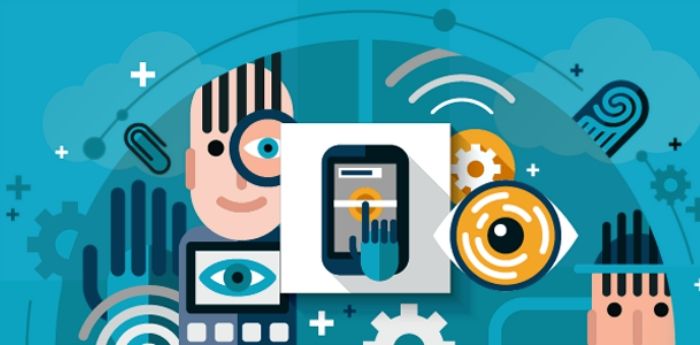
Security breaches are still increasing and enterprises are fighting an endless battle for login security. But many end up losing this battle to hackers who keep finding new ways around advanced security systems.
One popular method of securing online accounts is biometric authentication. Many security experts praise biometric authentication. They use it as the go-to option for securing accounts and devices. But this alternative to numerical passwords still has its disadvantages.
What Is Biometric Authentication?
In a nutshell, biometric authentication is a method of verifying a user’s identity using unique biological features.
While two people can come up with the same password, there is no chance that two pieces of biometric data can match. Biological features that people use for advanced identity authentication include:
- Voices,
- Irises,
- Fingerprints,
- Facial expressions,
Biometrics are unique to each individual user. Thus, they are more secure than traditional passwords. You can use biometric authentication as the primary type of authentication. It is also available as an element of two-factor authentication.
Either way, it is an effective and convenient method of logging into an account. It saves you from remembering complicated passwords too. Since you can always use your fingerprint or voice to log into an account, you won’t have to deal with dozens of passwords and credentials.
Besides, biometrics are more challenging to hack than the good old email and password combos. But you need to address that, even though more secure, biometric authentication is not bulletproof. Below are the risks and disadvantages of relying on this authentication system.
The Risks of Trusting Biometrics
Biometric authentication is a fast and convenient method of logging into devices and accounts. But it comes with its security risks. This system has been around long enough for hackers to find ways to exploit it.
Rapid advancements in image technology make biometric authentication less and less reliable. Cybercriminals use image manipulation tools and other malicious software to fool biometric algorithms. Often that is enough to gain unauthorized access to users’ data. Thus, not even biometric authentication can guarantee 100% security.
That is why individual users and enterprises should not ditch other security measures. It’s still vital to:
- Create strong passwords,
- Limit access to sensitive data,
- Use two-factor authentication,
- Scan all networks on a regular basis,
- Update all software when updates are available.
It doesn’t matter whether you need to protect a personal device or secure an entire enterprise network. The combination of the right protection measures will help you ensure optimal online security.
The Disadvantages of Biometrics
Some disadvantages of biometric authentication include:
- Its technical complexity,
- The inability to change the biometric identifiers,
- The higher cost.
Companies that use biometric authentication have to deal with expensive hardware. They also need to ensure the regular maintenance of biometric systems. Besides extra costs, there’s also the issue of technical complexity. Businesses need tech-savvy professional teams to manage biometric platforms.
In some cases, the vendors can take care of system maintenance. It removes some of these disadvantages from the picture. But the question of security remains, as biometric authentication is not bulletproof.
Thus, it’s best to pair this type of authentication with two-factor authentication and other safety measures. It can improve the security of the network and the devices within.
The Best of Both Worlds
According to research, 62% of businesses already use biometric authentication. While this is a good step toward accepting new trends, biometric security systems are not 100% secure.
Most smartphones nowadays enable biometric authentication. But they also use passwords for lock screen security. It is an excellent way to restrict access to your device and protect the personal data inside of it.
When it comes to securing enterprises, the story becomes a lot more complicated. For instance, a simple biometric authentication system can be convenient for employees to use on a daily basis.
But it is not reliable enough to carry the weight of securing the infrastructure of the entire company. Consider other forms of securing the devices and accounts:
Always pair biometric authentication with passwords and other security measures. For instance, also use two-factor authentication.
When it comes to strong passwords, use software and encryption to keep the credentials safe. For example, install a Chrome password manager for a secure (and encrypted) password storage, plus convenient and fast login. For sensitive data, encrypting files or their storage may be the best way to go.
